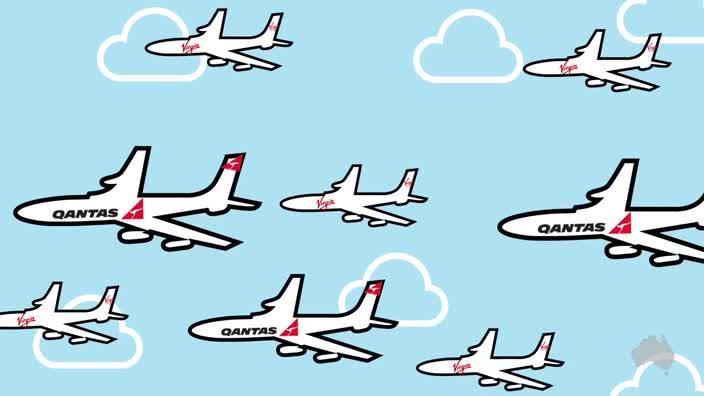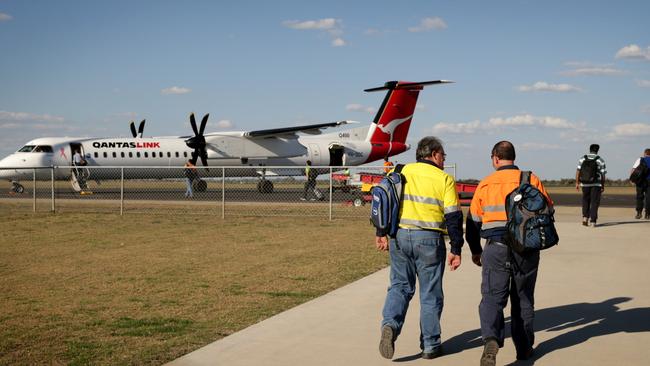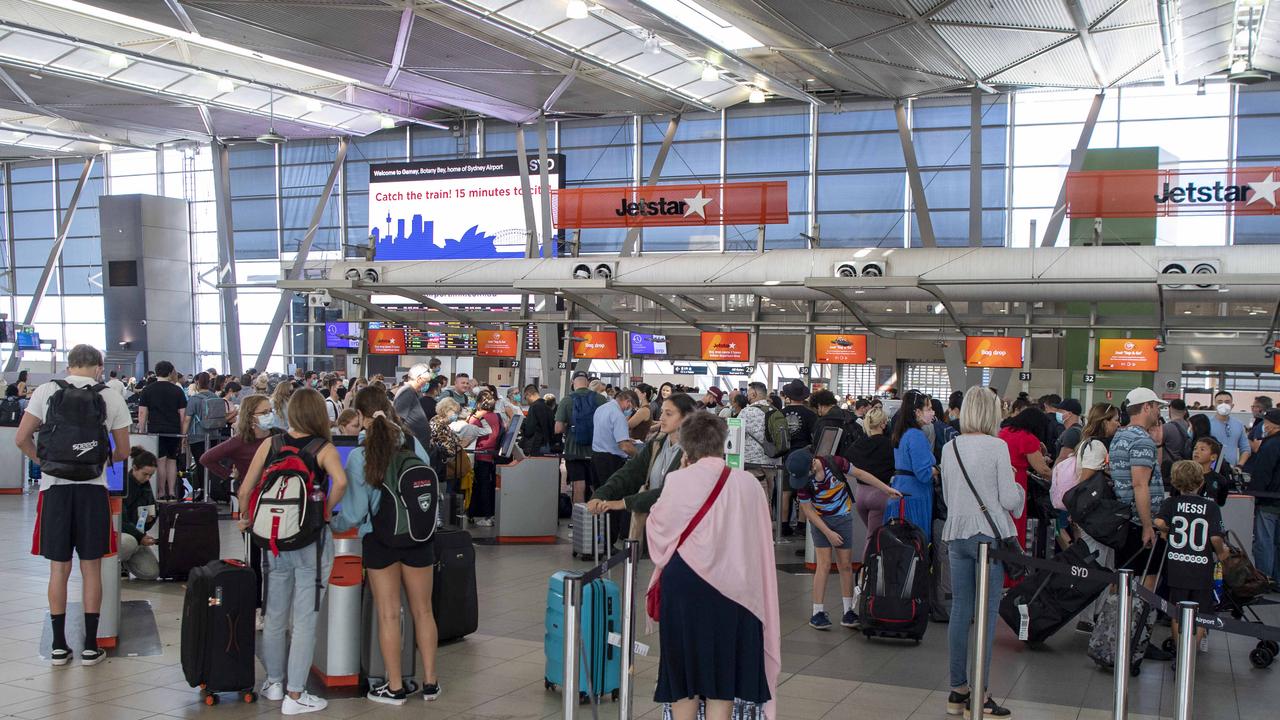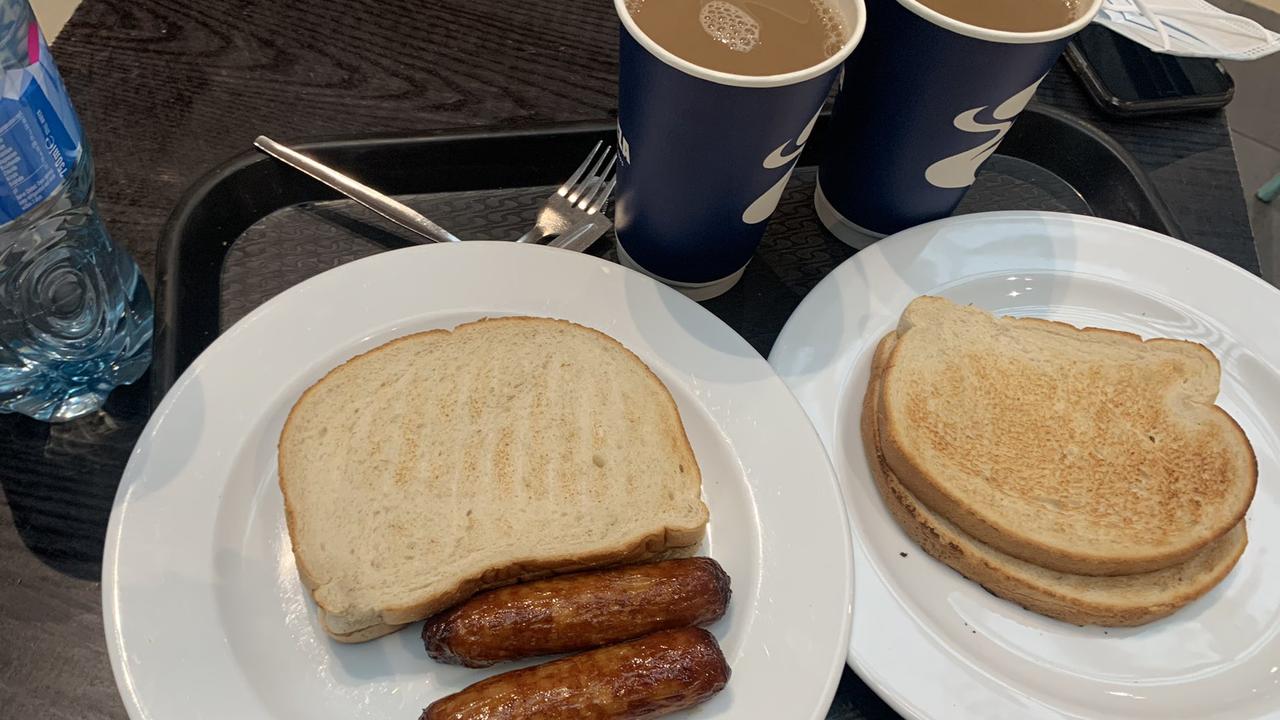Airfare creep and mining downturn hit domestic passenger numbers
BOTH domestic airlines are on track for solid half-year financial results in the next week — but with fewer people flying and more empty seats. How does that work?

Travel News
Don't miss out on the headlines from Travel News. Followed categories will be added to My News.
AIRFARE creep and reduced demand for flights from FIFO workers have been blamed for a fall in domestic air travellers across the country.
Latest statistics from the Bureau of Infrastructure, Transport and Regional Economics show regular public transport passenger numbers fell one per cent in December last year, compared with the same month in 2013.
Although capacity also declined, it did not fall at the same rate as passenger numbers leaving an average of 22.7 per cent of seats empty on each commercial aircraft.
Some of the biggest falls in passengers occurred on traditional FIFO routes including Brisbane-Mackay, which was down 17.7 per cent, Brisbane-Emerald (-16.2 per cent) and Brisbane-Moranbah (-11.2 per cent).

Brisbane to Hamilton Island also suffered a big drop of 19.2 per cent, along with Melbourne-Sunshine Coast (-16.4 per cent) and Sydney-Coffs Harbour (-14.6 per cent).
At the same time, airfares have been slowly rising with the cheapest fares now at 64.9 per cent of standard economy prices, compared with 60.6 per cent a year ago. Full economy fares are also up to 120.1 per cent, up from 117.3 per cent at the start of 2014.
VIRGIN GAME CHANGE: Budget predecessor painted out of the sky
Meeke Aviation Consulting owner Bill Meeke said airfare creep was taking at toll on the “bottom end of the market”.
“That’s the very, very cost sensitive part of the market, which means (airlines’) yield would have improved in some respects,” said Mr Meeke.
“They may be filling slightly fewer seats, but those passengers are paying a bit more.”
Mr Meeke said he had seen it himself on the Perth-Brisbane route he regularly flew for business.
“The average return fare used to be $660, now it’s over $800,” he said.
“It’s still very affordable but it’s not as cheap as it used to be and clients are getting me to fly less.”

Oliver Lamb from Pacific Aviation Consulting said the contraction of the FIFO market by no means spelt disaster for domestic carriers, who continued to do well on other key routes.
“Because there’s been a bit of a truce between Qantas and Virgin Australia and capacity growth has been relatively constrained, demand has gone up on routes such as Sydney-Melbourne, Melbourne-Brisbane and Adelaide-Melbourne,” said Mr Lamb.
“That’s allowed them to put airfares up.”
Despite the softening of the domestic market, both domestic carriers are on track for solid half-year financial results in the next week.
Mr Lamb said both groups were working the downturn in the FIFO market to their advantage.
“I think the airlines are in a bit of a sweet spot at the moment, and will be able to use their aircraft on other routes, and internationally as well,” he said.
Originally published as Airfare creep and mining downturn hit domestic passenger numbers



